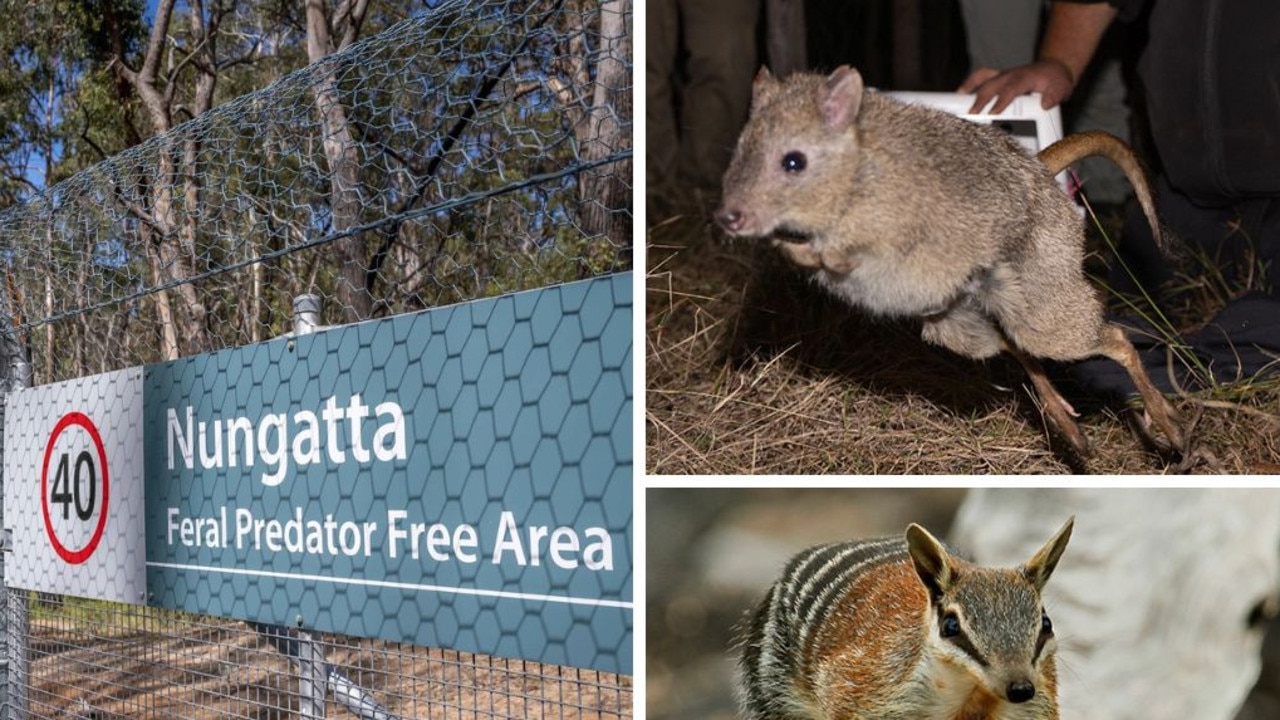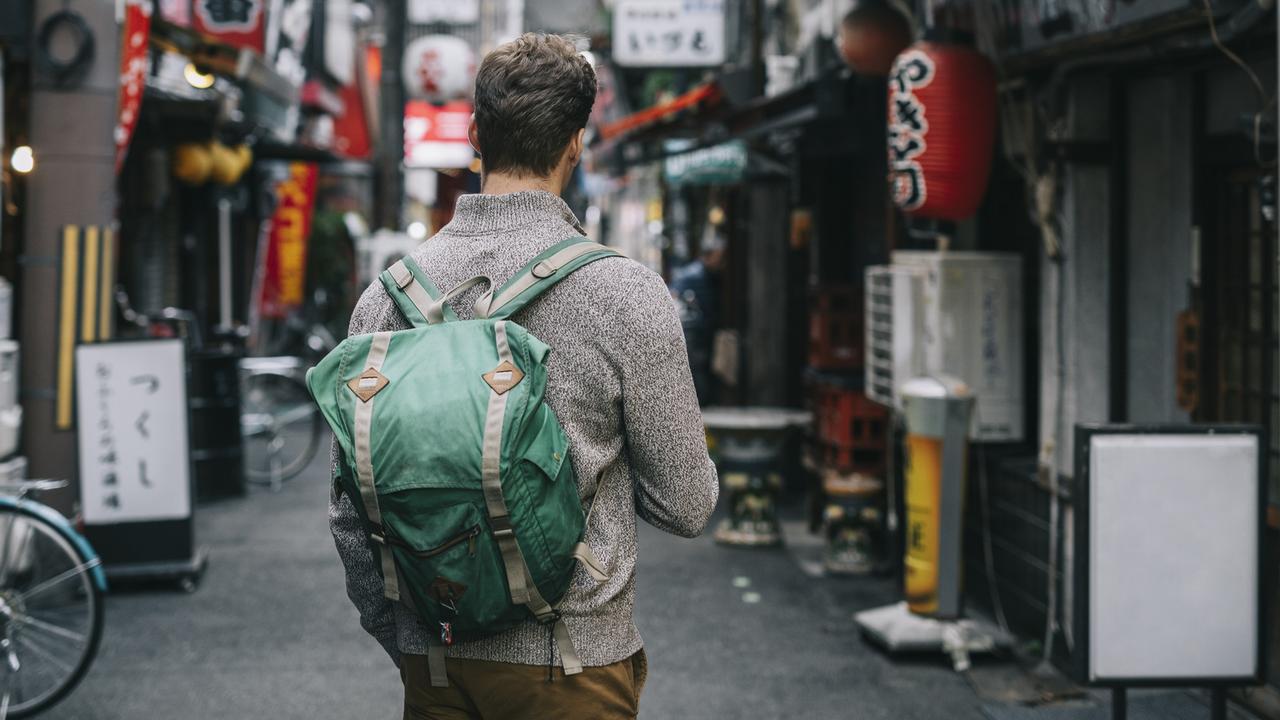Terrifying island no tourist is allowed to visit
It’s considered one of the most dangerous islands in the world but one Aussie was given special clearance to visit – revealing a sad reality.

An Aussie scientist has opened up about visiting a remote island infested with thousands of snakes that can melt the flesh off its victims with its toxic venom.
The crystal clear waters, lush rainforests and remote status of Ilha de Queimada Grande, just off the coast of Sao Paulo, sound appealing on the surface.
But only a handful of soldiers and scientists are granted approval to visit the world’s most dangerous island each year since it was ruled off limits in the 1920s.
The relatively small island, 1.5km long and only 500m wide, is home to lethal snakes – the golden lancehead viper species – one of the world’s most deadly.
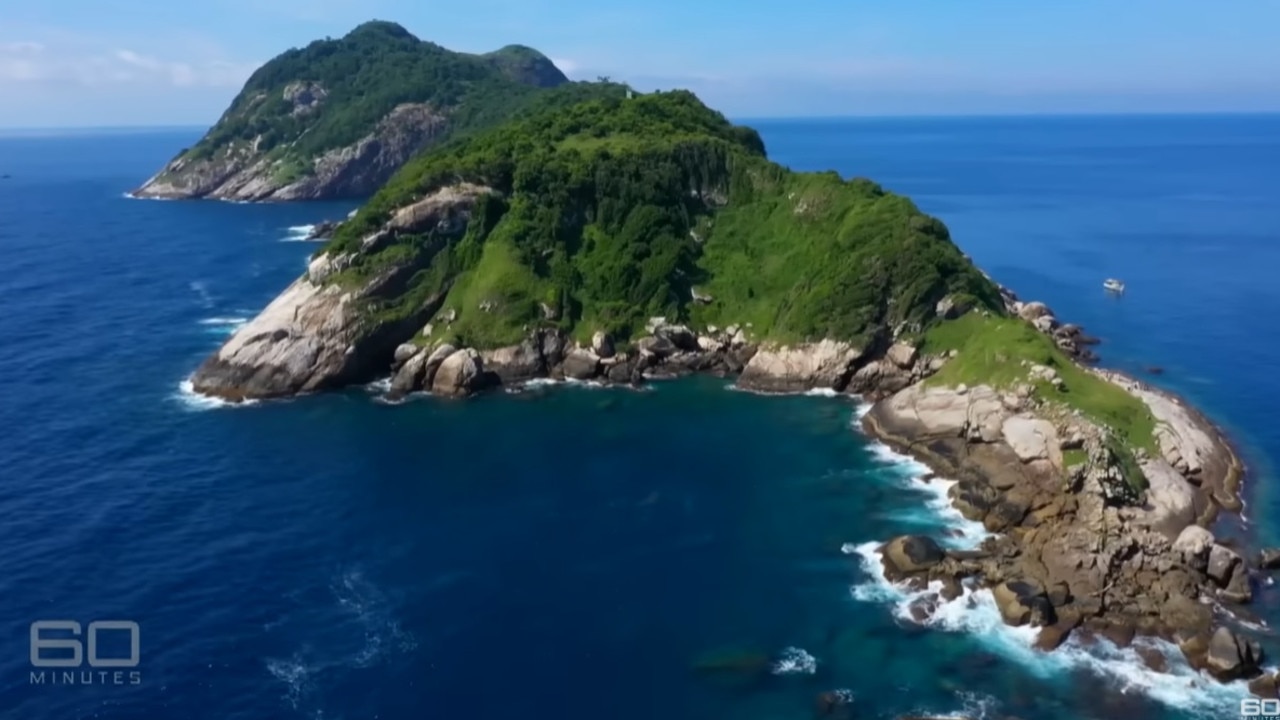
Better known as ‘Snake Island,’ the tiny pocket of land is considered the most dangerous acreage on the planet because of the species, found exclusively on the island.
Lancehead viper venom is five times more poisonous than their mainland cousins, and can kill a person in under an hour.
Their venom causes a range of horrifying symptoms, from kidney failure to internal bleeding and tissue death. In some cases, it’s been known to melt human flesh.
Only a few scientists who study the snakes each year can visit, along with, on occasion the Brazilian navy, who tend to the autonomous lighthouse that was built back in 1909.
Bryan Fry, self-described snake geek and professor of toxicology at The University of Queensland, is one of the very few who have visited the island, in 2010, 2015 and 2019, to study the snakes’ venom and population.

On his last trip, he was joined by then 60 Minutes presenter Tara Brown, where it took her about six months to get special clearance.
“With science leading I agreed to follow even though I was always ready to run,” she said at the start of the episode.
She learned just how dangerous the snakes’ venom is with the species one of the most deadliest snakes in the world.
Professor Fry told her you don’t want to be bitten by these snakes as you will die a painful death – “you’re going to die screaming”.
In an interview with news.com.au, the scientist explained that if you find yourself face-to-face with a lancehead pit viper, your arm will eventually rip off.
‘Arm ripped off’
“Any of the lancehead pit vipers, if you live long enough after a bite, you’re going to have your arm ripped off because they cause incredible tissue damage,” Profesor Fry said.
“That’s typical for all this style of snake. But that’s not the intended effect. They’re not trying to rot their prey to death.
“Rather, that’s symptomatic of how they kill, which is that they kill by stroke and haemorrhagic shock. So they basically completely nuke your blood system causing your blood to clot, but at the same time, they’re also destroying the integrity of your blood vessels.
“So if the prey doesn’t die of stroke, it’s going to bleed out because its blood vessels are basically melted on the inside and that’s the same kind of melting that’ll happen to our arm if we live long enough.”
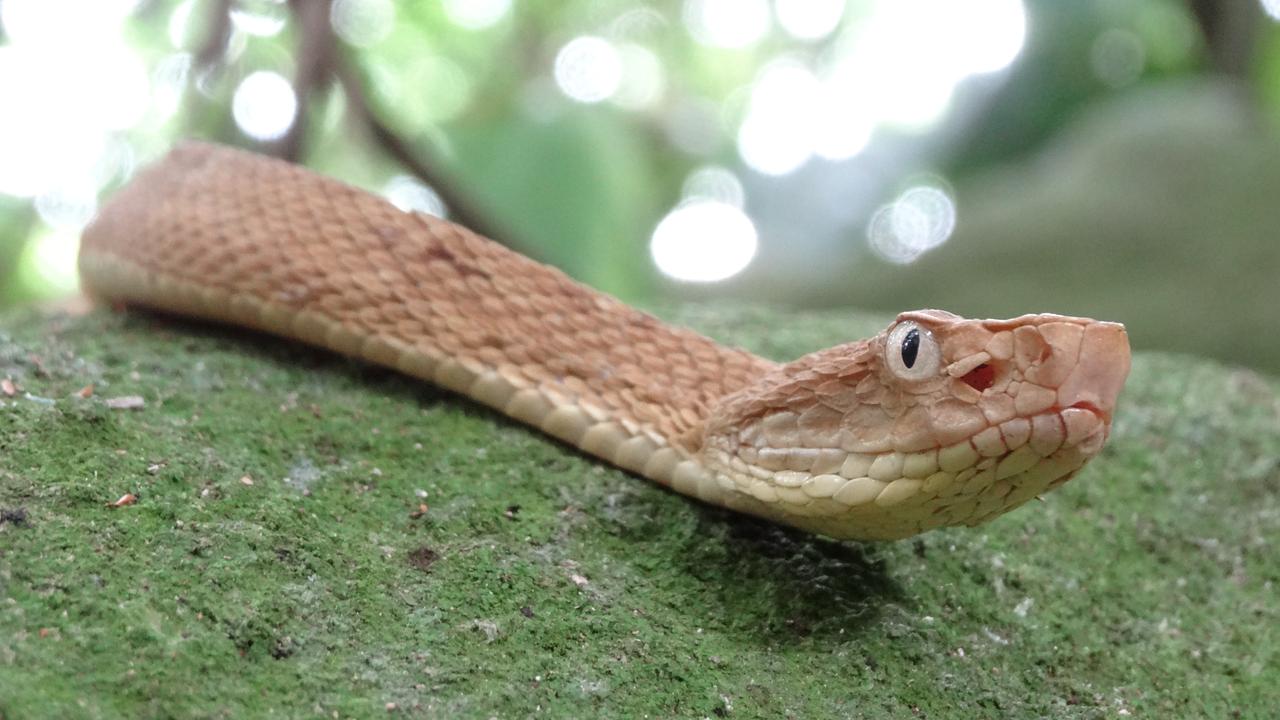
‘Amazing snakes’
When asked if he was frightened during his three visits his immediate response was “not at all”.
“For me it was basically like going to Mecca,” he laughed, describing the snakes as “amazing”.
Given the dangers, authorised scientists and personnel must wear the appropriate clothing.
“I wore needle-stick gloves that went up to my elbows, and snake-gaiters that went up to my knees,” Professor Fry said.
“To catch the snakes, we’d use a snakehook to pin the head and then hold it behind the head to get the venom samples.
“I remember one time we did a one kilometre transect across the island which took us less than an hour and we counted 185 snakes – it was awesome.
“It’s one of those magical experiences [but] every time I’ve gone back to the island there’s less and less snakes.”

Snake numbers on the decline
Professor Fry, who would spend three to four days on the island studying the snakes’ venom, health and their population, said the sad reality is that snake numbers on the island are dwindling.
What was once about 4,000 Golden Lancehead Vipers on the island, is now much less, with numbers on a sharp decline.
“Even the back part of the island from the Lighthouse onwards, where it’s the absolute perfect and most pristine environment [for them], there’s less and less snakes there,” he said.
“Where we saw 185 on the first trip, the last time we went we got about 20.”
He also said the snakes were not in very good condition with their health also taking a noticeable hit.
“They weren’t fat, they were skinny, they were bony, they had ticks on them and they were covered with parasites.”

Reason for population decline
“It’s not due to any human activity, sure there might be a little bit of poaching going on, but not to any great extent, I don’t think,” he said.
“The decline in numbers are due to the food. There’s very little available prey on the island.”
Professor Fry said the snakes’ main pray is migrating birds and there’s a shortage of them.
“Habitat destruction is certainly impacting bird numbers, but the biggest part is the bird movement patterns have changed.
“There’s been so much deforestation along the Atlantic coast of Brazil in the Sao Paulo, Santos area.”
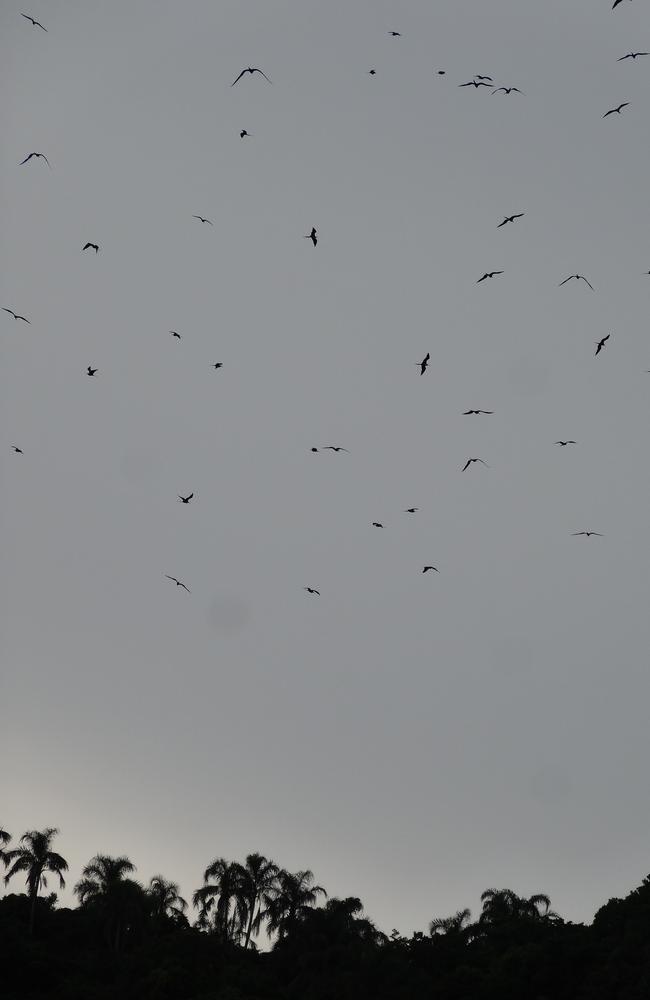
He explained this becomes a domino affect impacting an entire food web.
“If you take out the trees, you take out the clouds, which means you take out the rain and insect blooms.”
He said this impacts the little birds for feeding on the insects, which means you’re ultimately going to take out the snakes that are feeding on the birds.
“It’s been very poignant seeing that happening because of rampant deforestation hundreds of kilometres away [and as a result] the little birds are staying more in the interior of Brazil and not coming to the coast seasonally.”
Medication impacts
Professor Fry said if we lose snakes like the Golden Lancehead, it means we may lose the next “wonder drug”.
“If you know of anybody taking high blood pressure medication, odds are they’re taking Captopril or one of its derivatives and that was pulled out from one of the Brazilian Lanceheaded pit vipers.
“In fact, the closest relative to the snake that’s found on the mainland is what was the well spring for that drug that was invented nearly 50 years ago.
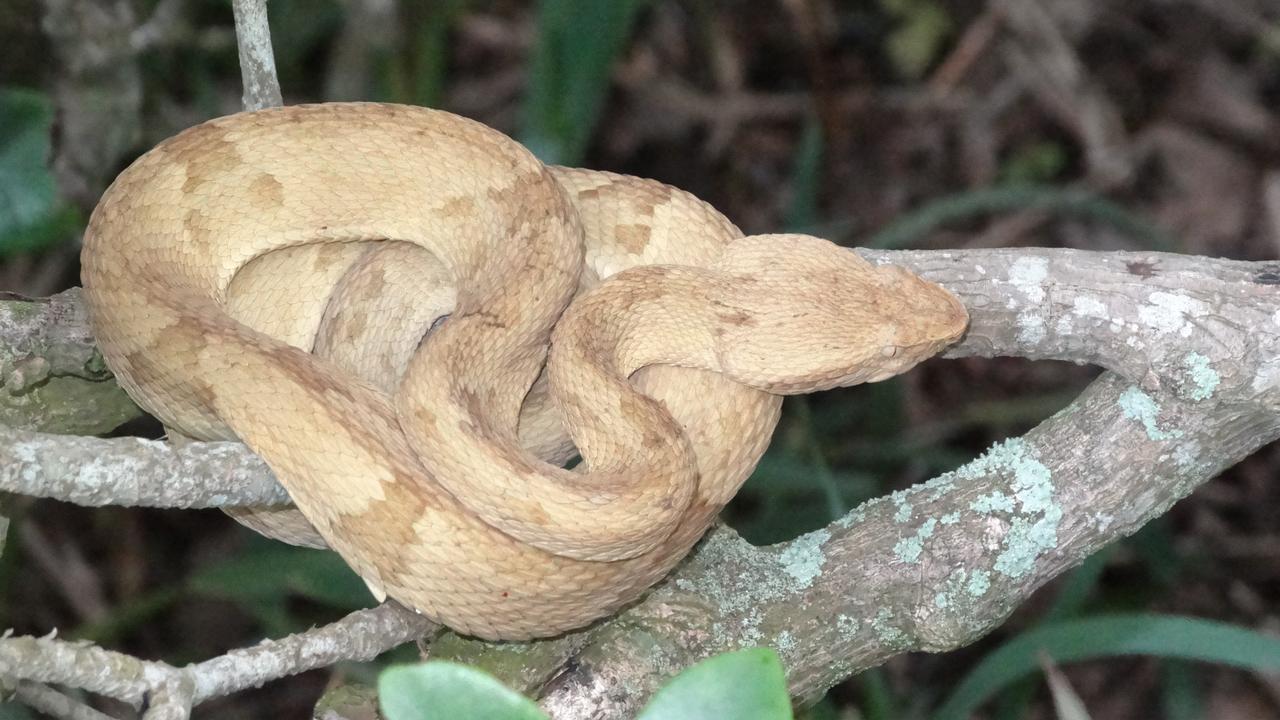
“It remains (today) as a $10 billion a year market. There’s very few drugs that have that kind of staying power.
“Even today, 50 years on, it’s still the dominant form of high blood pressure medication. So it’s a wonder drug up there with aspirin. Its medical, social, and economic importance cannot be overstated.”
Professor Fry said there’s a couple of institutions in Brazil that have collections, but they’re small collections.
“They’ll preserve the snake as a species, but it won’t preserve the biodiversity of the snake, and it certainly won’t preserve the snake in the wild itself.
“If the birds die out, the snakes are going to die out and no amount of captive bleedings successes will make that island amenable to snakes without food.”
According to the BBC Science Focus, the snakes were trapped on the island around 11,000 years ago, at the end of the last ice age, when rising sea levels cut them off from the mainland.
And the isolation of the island, combined with its unique environment, has led to the evolution of the snake species that you can’t find anywhere else on the planet.
But as Professor Fry explained, limited food supply is affecting the snakes.
The International Union for Conservation of Threatened Species has the golden lancehead viper listed as critically endangered, meaning it faces an extremely high risk of extinction.
The Aussie scientist is hoping to get back to the island in the next two years.
“You need a series of special permits beyond just normal wildlife ones,” he said.
“The island is under the control of the navy, so you need military permits as well – that’s why with people I’ve been collaborating with in Brazil, as it’s much easier for local scientists to get the permits.”




